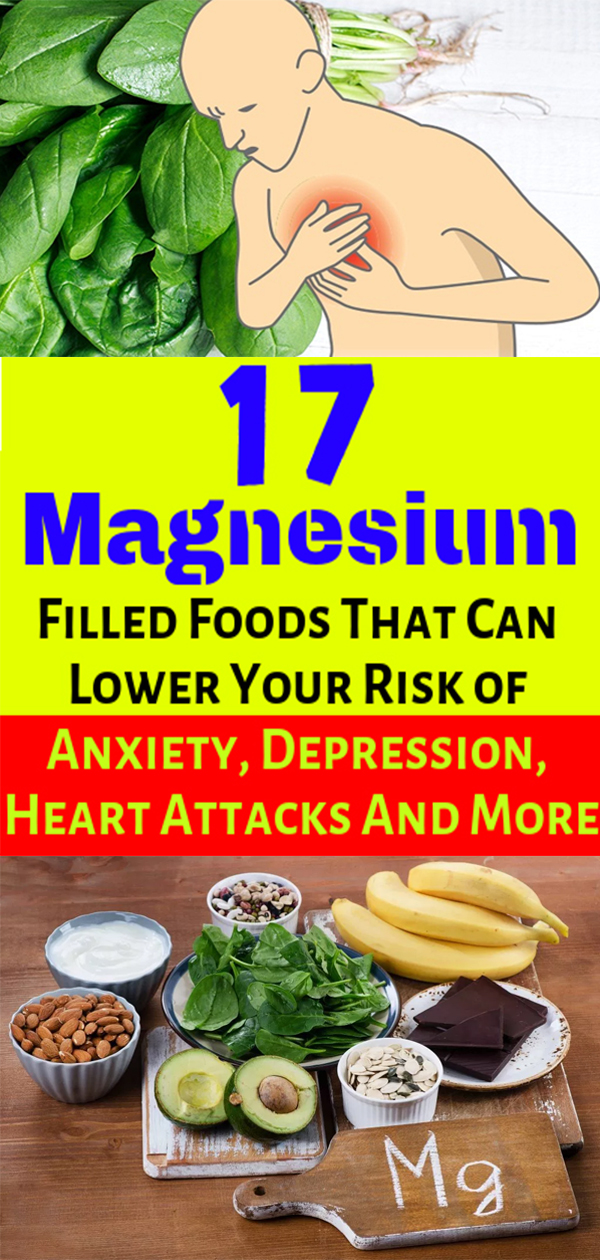Magnesium is the fourth most abundant mineral in the body, and it is crucial for our biological function and optimal health. This mineral is involved in multiple biochemical processes in the body, essential for proper metabolic function, and over 300 different enzymes rely on magnesium it for proper function.
Here are some of its roles:
- Proper formation of bones and teeth
- Regulation of blood sugar and insulin sensitivity
- Relaxation of blood vessels
- Creation of ATP (adenosine triphosphate), the energy currency of the body
- Muscle and nerve function.
Therefore, the lack of cellular magnesium in the body leads to serious health issues, and symptoms like anxiety, depression, migraines, and headaches, fibromyalgia, cardiovascular disease, sudden cardiac death, and even death.
It is also vital for lowering the damage due to toxic exposures, and the optimization of mitochondria. Mitochondria are tiny bacteria-derived organelles residing inside the cells, that produce most of the energy needed by body organs to function properly.
Magnesium deficiency is mainly a result of a diet rich in processed foods, as magnesium resides at the center of the chlorophyll molecule.
Therefore, the low amounts of leafy greens and other magnesium-rich whole foods in the diet will lead to the lack of magnesium in the body.
Magnesium levels are also reduced due to stress, sleep deficiency, alcohol, and use of certain prescription drugs like diuretics, statins, fluoride, and fluoride-containing drugs.
Also, as most magnesium is concentrated in the bones and soft tissues, no lab test can accurately diagnose magnesium deficiency, so the best way to detect it is by tracking your symptoms.
The most common symptoms of magnesium deficiency include appetite loss, nausea, migraines and headaches, fatigue, “Charlie horses”, and weakness. In more severe cases, magnesium deficiency leads to abnormal heart rhythms and coronary spasms, seizures, numbness, tingling, and personality changes.
Unfortunately, most soils have become depleted of nutrients, so some experts recommend additionally taking magnesium supplements, apart from the consumption of magnesium-rich foods.
The recommended daily allowance (RDA) is around 310 to 420 mg, and some researchers maintain that we may need as much as 600 to 900 mg/day for optimal health.
According to Dr. Carolyn Dean, author of “The Magnesium Miracle,” suggests using the intestinal reaction as a marker for the ideal dose. Start out by taking 200 mg of oral magnesium citrate daily, and increase the dose until you develop slightly loose stools.
The best way to optimize magnesium levels in the body is to increase the intake of dark-green leafy vegetables. The richest magnesium sources include:
- Spinach
- Kale
- Bok Choy
- Romaine lettuce
- Swiss chard
- Collard greens
- Broccoli
- Brussels sprouts
- Turnip greens
- Beet greens
Other foods high in magnesium include:
- Avocados are rich in magnesium, and a medium one contains about 58 mg of it
- Herbs and spices, like parsley, mustard seeds, fennel, coriander, chives, cumin seed, cloves, and basil
- Raw cacao nibs and/or unsweetened cocoa powder, as one ounce contains 64 milligrams of magnesium
- Fruits and berries, including tomato, cantaloupe, strawberries, papaya, raspberries, and watermelon
- Seeds and nuts, and a ¼ cup of pumpkin seeds, sesame seeds, and sunflower seeds provide 48 percent, 32 percent and 28 percent of the RDA of magnesium respectively
- Fatty fish like wild-caught Alaskan salmon and mackerel are rich in this mineral, as a half fillet (178 grams) of salmon contains 53 mg of magnesium.
- Squash is rich in magnesium, and a cup contains 27 mg.
Note that if you rely on supplements, you need to ensure that you won’t end up with lopsided nutrient ratios.
In this case, it is important to maintain the proper balance between magnesium, calcium, vitamin K2, and vitamin D, as they all work together synergistically, and any imbalance can lead to an increased risk of strokes, heart attacks, and vitamin D toxicity.
Keep in mind that:
- The ideal ratio between magnesium and calcium is 1:1, so as our diets are rich in calcium, the need for supplemental magnesium may be 2 to 3 times greater
- Sun exposure is the best way to optimize your levels, but the “ideal dosage” if you take supplements is between the therapeutic range of 40 to 60 ng/ml.
- For every 1,000 IU’s of vitamin D you take, take 100 micrograms (mcg) of K2, and perhaps as much as 150-200 mcg.
Furthermore, one of the best ways to boost magnesium levels in the body is to use magnesium oil or to take regular Epsom salt baths.
Now, make sure you try the following delicious magnesium-rich smoothie recipes to boost the levels of this mineral in the body and reap numerous health benefits:
Fig and almond milk smoothie
Ingredients:
- 5 ripe figs
- A cup of almond milk (200 ml)
- 1/2 teaspoon of sesame seeds (2 g)
- 1/2 teaspoon of sugar (2 g)
Instructions:
Peel the figs and add them in the blender. Pour the almond milk, add the sesame seeds, and blend for a few seconds. Sprinkle the sugar on top.
Banana, chocolate, and maple syrup smoothie
Ingredients:
- 1 banana
- 1 tablespoon of dark cocoa powder
- A tablespoon of maple syrup
- 1 cup of almond milk
Instructions:
Peel the banana, and cut it into three pieces. Place it in the blender, add a cup of almond milk, the cocoa powder, and the maple syrup and blend until you get a homogenous mixture.
Spinach, avocado, and strawberry smoothie
Ingredients:
- 1 cup of spinach
- 1/2 avocado
- 8 strawberries
- 1 tablespoon of honey
- A cup of water
Instructions:
Wash all the ingredients. Then, add the spinach leaves to the blender, together with the strawberries and the avocado. Pour the water over them, add honey, and blend well until smooth.
Mega Magnesium Smoothie Raw Ingredients
Ingredients:
- 1/2 bunch of fresh kale
- 1/2 bunch of fresh spinach
- 5 bananas (fresh or frozen)
- 4 dates
- 1 Tablespoon of Chlorella
- 1.5 – 2 cups of purified water or fresh coconut water
Instructions:
Add the kale, spinach, dates, bananas in the blender, Pour the purified water or fresh coconut water over them, add chlorella, and blend until you get a smooth mixture.
Enjoy!


